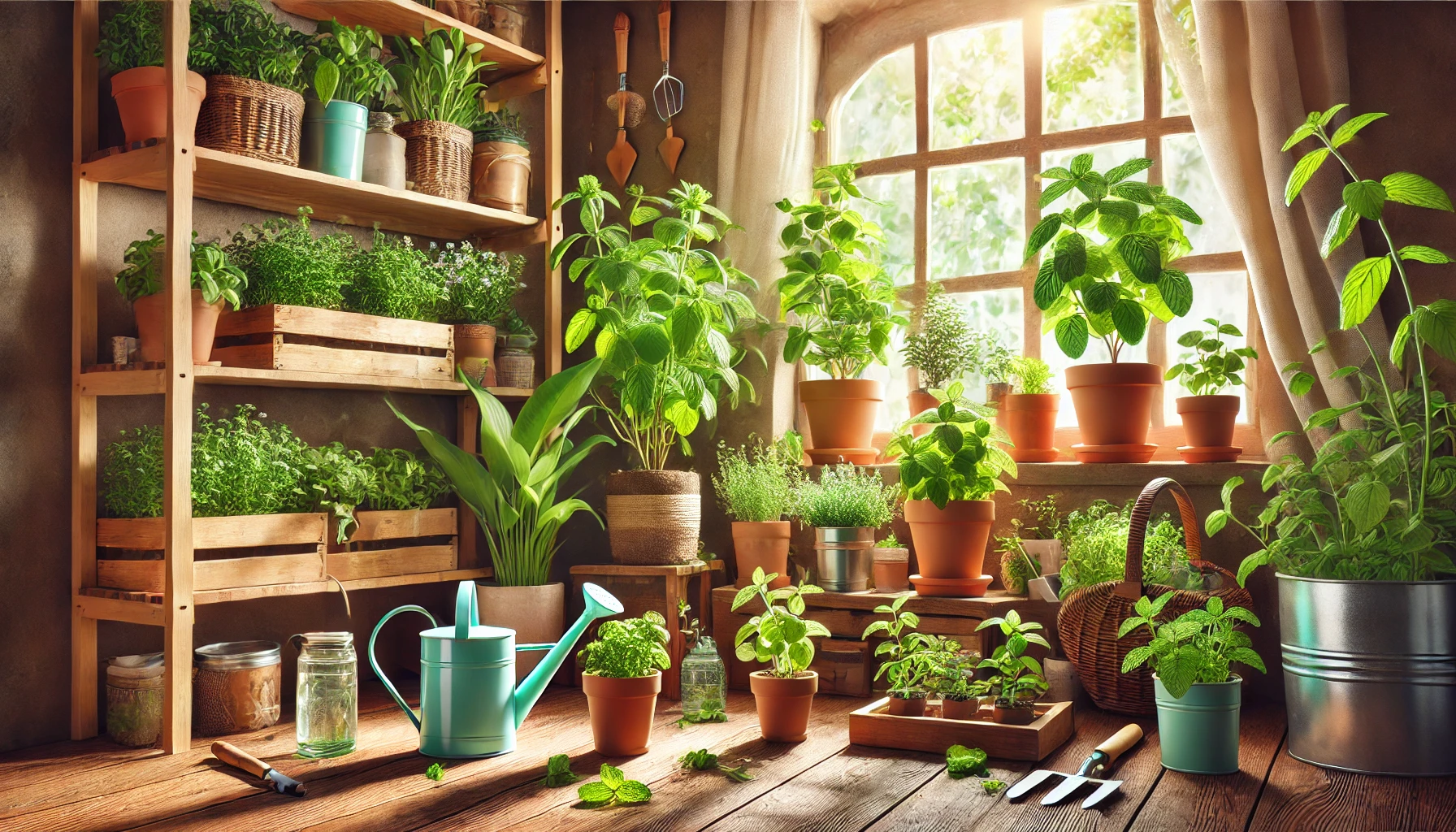Mint is a versatile and aromatic herb that is perfect for indoor gardening. Growing mint indoors not only provides fresh leaves for your culinary and medicinal needs but also adds a pleasant fragrance to your home. In this detailed guide, we’ll cover everything you need to know about growing mint indoors, including the best fertilizers to use at each stage of growth.
Mint is one of the easiest herbs to grow indoors. With its rapid growth and minimal care requirements, it’s a favorite among both beginner and experienced gardeners. Whether you have a sunny windowsill or a well-lit room, you can cultivate a healthy mint plant indoors. Here’s how to do it.
Choosing the Right Mint Variety
Before you start, choose the right variety of mint. Popular indoor varieties include:
- Spearmint (Mentha spicata)
- Peppermint (Mentha piperita)
- Chocolate Mint (Mentha x piperita ‘Chocolate’)
- Apple Mint (Mentha suaveolens)
Each variety has its unique flavor and aroma, so select the one that best suits your needs.
Planting Mint Indoors
Selecting Containers:
- Use a pot that is at least 8-10 inches in diameter with good drainage holes.
- Mint has invasive roots, so a wide container helps to contain its spread.
Soil Requirements:
- Use a well-draining potting mix. A mix of regular potting soil and perlite or sand works well.
- Ensure the soil pH is between 6.0 and 7.0 for optimal growth.
Light and Temperature
- Light: Mint needs about 6 hours of sunlight daily. Place the pot on a windowsill that gets plenty of sunlight, preferably south-facing. If natural light is insufficient, use a grow light.
- Temperature: Mint thrives in temperatures between 65-70°F (18-21°C) during the day and slightly cooler at night.
Watering Mint
- Keep the soil consistently moist but not waterlogged. Water when the top inch of soil feels dry to the touch.
- Ensure proper drainage to prevent root rot.
Fertilizing Mint
- Seedling Stage:
- Use a balanced, water-soluble fertilizer diluted to half strength every 4-6 weeks.
- An all-purpose fertilizer with an N-P-K ratio of 10-10-10 works well.
2. Vegetative Growth Stage:
- Switch to a nitrogen-rich fertilizer to promote lush, green growth. A fish emulsion or a 16-16-16 fertilizer diluted to half strength is ideal.
- Fertilize every 4 weeks during the growing season.
3. Maintenance Stage:
- Once the plant is established, reduce fertilizing frequency to every 6-8 weeks.
- Use a balanced 10-10-10 fertilizer to maintain overall health and vigor.
Pruning and Harvesting
- Pruning: Regularly pinch back the stems to encourage bushier growth and prevent the plant from becoming leggy.
- Harvesting: Harvest mint leaves as needed. For best flavor, pick leaves in the morning after the dew has dried. Frequent harvesting also promotes new growth.
Common Pests and Problems
- Aphids and Spider Mites:
- Inspect the plant regularly for pests. If you notice any, spray the plant with a mixture of water and mild soap or use neem oil.
2. Powdery Mildew:
- Ensure good air circulation around the plant and avoid overhead watering to prevent fungal diseases.
Propagating Mint
- Cuttings: Mint can be easily propagated from cuttings. Take a 4-6 inch cutting from a healthy plant, remove the lower leaves, and place it in water or directly into moist soil. Roots will develop in a few weeks, and the cutting can be transplanted to a pot.
Final Tips
- Rotate the plant occasionally to ensure even growth on all sides.
- If the plant becomes too large, divide the root ball and repot the sections in separate containers.
Conclusion
Growing mint indoors is a rewarding experience that provides a continuous supply of fresh herbs for your kitchen. By following these tips and using the right fertilizers at each stage, you can ensure a thriving indoor mint garden. Enjoy the process and the many benefits that come with cultivating this versatile herb.
References
This comprehensive guide covers all the essential aspects of growing mint indoors, from planting to harvesting, ensuring you have a thriving indoor herb garden.



